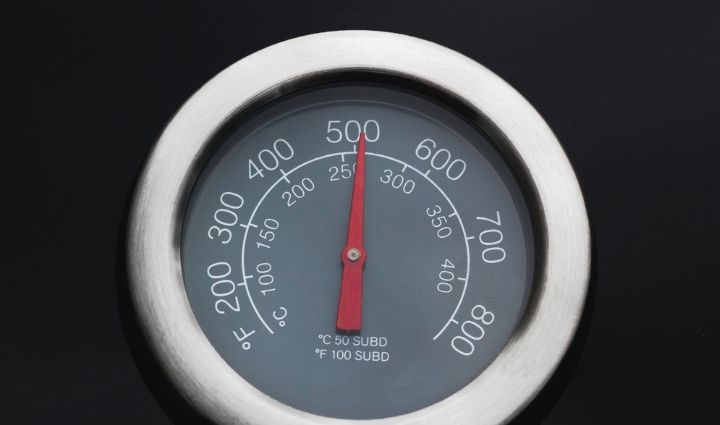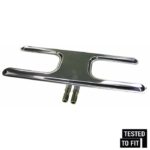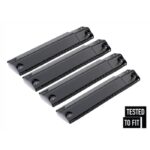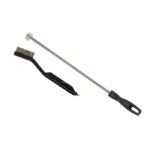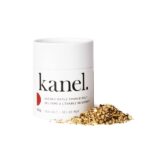Cooking on a gas grill requires heat that is generated by a flame. If your grill is working properly, gas will be evenly distributed to the burners, the flames themselves will be blue with yellow tips, and your grill will heat up quickly.
If you’re wondering why your bbq isn’t getting hot enough, there are a few easy tricks you can try to get it back in business before you look into replacing parts or getting a brand new grill. Low temperatures and uneven heating are usually easily solved in just a few simple steps, but before you start troubleshooting, it helps to understand how your grill works so you can more easily determine what parts might be causing the issue.
The flame on a propane-powered gas grill is fed by gas that starts in the propane tank. When it leaves the tank, the propane gas passes through a regulator that controls the pressure. It then travels through a manifold that divides the gas up between the burners before it passes through the control valve where you can adjust the flow rate to control temperature. From there, the gas continues through venturi tubes where it mixes with oxygen so it can burn, then into the burners and out through the burner ports where flames are visible. There is also typically a heat plate located above the burners to help distribute heat evenly and catch food drippings.
If you spot any issues like low temperatures and uneven heating or turning the control knobs doesn’t increase the size of the flame, you may have an issue with the regulator or burners, or there may be a blockage in one of the tubes. Low or no flames are commonly caused by:
- A near-empty propane tank
- A damaged port or component, such as a faulty regulator, or corroded burners
- The flow-limiting device has been activated
- Poor connections
If your bbq isn’t getting hot enough or it’s heating unevenly, the first thing you should always do before troubleshooting is to turn off the tank valve and disconnect the propane tank from the grill. If your grill was on, make sure it’s completely cooled before disconnecting the tank. If the gas was on, give it 5 minutes so the gas can dissipate before you troubleshoot.
Keep reading for our expert advice on troubleshooting your grill, including how to adjust your gas grill regulator, how to check for gas leaks, and how to fix issues with uneven heating.
How To Fix Low Flame and Low Temperatures
If you’re experiencing low flame and low temperatures, start by resetting your grill’s gas regulator. All gas grills have a propane regulator that controls the flow of gas from the propane tank to the grill, and this regulator is one of the most common reasons why a bbq is not getting hot enough.
Since the mid-90s, all gas grills regulators must also come equipped with a safety device called a flow-limiting device, or “Overfill Protection Device” (OPD). The flow-limiting device prevents the grill from being overfilled with gas or releasing more gas if it senses there is already gas trapped in the line or manifold. It’s easy to inadvertently activate this safety device even if you don’t have a gas leak, especially if you turn on the control knobs before you turn on the propane tank valve. In this case, the safety valve will not fully open until the gas pressure has been equalized between the tank and the grill, and your grill is in something called “bypass mode”. When this happens, your grill will only ever reach temperatures between 250 and 300, even with all the burners turned to the highest setting.
Inadvertently triggering your grill’s “bypass mode” is one of the most common causes of low flames and low temperatures. Don’t worry—resetting or adjusting the gas grill regulator and flow-limiting device is easy and only takes a few moments.
GRILL SPOT TIP: Before you use our directions below, read and follow your grill manufacturer’s instructions for how to adjust your gas grill regulator. If you don’t have your manufacturer’s instructions, follow the directions below.
How To Adjust the Gas Grill Regulator
To adjust the gas grill regulator and reset the flow-limiting device, follow these steps:
- Open the grill lid, turn off the gas at the propane tank, and disconnect the gas line from the tank.
- Turn all the control knobs up to high, including your side burner if you have one.
- Wait for one full minute, then turn all the control knobs off.
- Reconnect the regulator to the propane tank and slowly turn the gas on at the tank.
- Light your grill. It should light up and heat properly.
If you’re still experiencing low flame, the next step is to check for a gas leak.
How To Check a Gas BBQ for Gas Leaks
It only takes a few moments to check for a gas leak. We recommend that you check for gas leaks each time you connect your regulator or natural gas hose to the barbecue, or after long periods of storage.
Follow these steps to test for a gas leak:
- Make sure your gas supply is turned off and all control knobs are in the OFF position.
- Inspect all hoses on the grill, looking closely for signs of deterioration such as cracking, abrasions, holes, or tears. Ensure all the hoses are tightly connected and that there are no sharp bends or kinks in the gas line.
- Check the gas cylinder for rust, dents, bulges, corrosion, punctures, or other signs of damage.
- Mix a 50/50 solution of water and dish soap and apply it to the gas hose and connections points with a spray bottle or with a clean brush.
- Open the gas supply, but do NOT turn on the control knobs or light the grill. Do NOT smoke while testing for gas leaks.
- Inspect the hose and connection points. If you see growing bubbles forming at any point, this indicates a gas leak.
- Turn off the gas supply.
Read our complete instructions for checking for a gas leak.
Checking for a gas leak is also a great opportunity to ensure all the connections are tight and secure. Loose connections can also result in low temperature and also pose a fire risk.
How To Check for Obstructions
If you have high heat but it’s uneven or you’re seeing yellow or orange flame, the venturi tubes may not be properly aligned with the burner or the burner may be obstructed by food debris or insects.
Start by checking that the burner tube is properly seated on the gas valve. If it is not realign the burner tube so that the valve sits inside the opening of the burner. If the burner alignment looks okay, remove the burners and use a bottle brush or special venturi brush to clean out the venturi tube of each burner—spiders and insects like to set up shop in these tubes and are a common source of blockages. Left unattended these blockages can lead to flashback fires, where the gas is forced toward the control panel, in which case you may see flames at the front of the grill or find that the control knobs are hot.
The third thing to check is if any of the burner port holes are clogged. Drippings can run over the heat plates and onto the burners and clog the port holes. These are usually spotted by observing how the grill burns—if there are spots without flames, you might have clogged burner ports. If so, all you need is a wire brush or other needle-like object to remove these deposits from each clogged port and restore normal gas flow.
Why Is My BBQ STILL Not Getting Hot Enough?
If you’ve reset the regulator, checked for leaks, tightened the connections, and cleared away obstructions and your grill still isn’t getting hot enough, you may need to replace some grill parts:
- If the flames are consistently low, you may need a new propane regulator.
- If the flames are hot but uneven, you may need to replace the burner.

